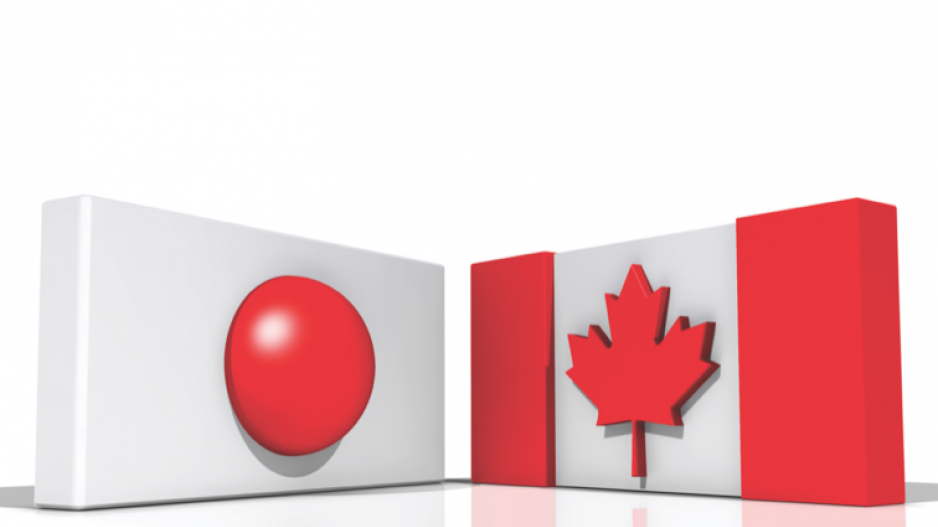While Canada’s Indo-Pacific Strategy has revealed a significant re-positioning towards India and Southeast Asia, attention on East
Asia – traditionally the Pacific Rim region most linked to B.C. – remains steadfast.
Canada’s new road map for engagement in East Asia with partners Japan and South Korea, while not as detailed in outlining the economic potential in these relationships as the country’s strategy did with India and ASEAN (Association of Southeast Asian Nations), still underscored the region’s importance to Canadian economic interests.
But it is also clear that Canada is now putting more emphasis than ever on regional security when it comes to its second- and third-largest trading partners in Asia.
“As more goods move from Canada to the Indo-Pacific markets, maritime security and the enforcement of the rule of law are becoming increasingly critical,” said the strategy document about Japan and South Korea, qualified as the “North Pacific.”
“Canada will build upon existing activities – such as countering illegal, unreported and unregulated fishing through Operation North Pacific Guard – to deepen our co-operation with Japan and the Republic of Korea in this region,” the strategy added. “Emerging security challenges and supply chain disruptions highlight the need to collaborate on enhancing economic security.”
Such attention, however, comes at an interesting time in East Asian geopolitics. Both Japan and South Korea have had major leadership changes within the last 15 months, and there has been a major shift in leadership style in China in recent years even though there have been no change in its head of state.
Yves Tiberghien, professor of political science at the University of British Columbia and director emeritus of the school’s Institute of Asian Research, said the recent leadership changes in all three of these markets require Canadian stakeholders to pay close attention – especially because the changes coincide with significant social discontent in all three countries.
Given Prime Minister Fumio Kishida’s more hawkish position towards China, Japan appears tobe the most like-minded partner for Canada in its new direction of security-driven economic opportunities.
Tiberghien said Kishida’s tough stance on national defence and deterring threats from China, North Korea and even Russia has
surprised many since the former Japanese foreign affairs minister took office in October 2021.
“On diplomacy, he surprised everyone because he was known to be the Hiroshima member of the House of Representatives who brought ex-U.S. president Barack Obama to the city in 2016,” Tiberghien said, noting the act’s symbolic anti-war messaging.
“But then he has taken a much more hawkish position against China and Russia, and a lot of it has to do with timing.”
Tiberghien added that Kishida’s stance on Russia’s invasion of Ukraine in February was unusually forceful for a Japanese politician as he participated fully in sanctions against Moscow. Japan, under Kishida, will also increase defence spending to two
per cent of total GDP by 2027 – a doubling of the traditional one per cent figure.
“So the guy from Hiroshima becomes the man who re-arms Japan, which is an amazing paradox,” Tiberghien said. “But it’s largely due to what’s happening, because of the threatening environment, and the public has been OK with it – even supporting it.”
The leadership situation’s effect on Asian geopolitics in South Korea is slightly less clear. After five years away from control, the country’s conservative, nationalist and traditionally anti-communist faction (now under the name People’s Power Party) returned to office under president Yoon Suk-yeol in May. Yoon is the country’s former prosecutor general and a novice politician.
But despite campaigning on tougher positions against North Korea and – in turn – China, Pyongyang’s biggest ally, the new South Korean leader has largely avoided criticizing Beijing since coming to power.
Yoon’s administration has also not followed through on campaign vows to improve relations with Japan. But Tiberghien said South Korea’s participation in the NATO summit is an encouraging enough sign of Seoul’s foreign policies when it comes to alignment with Canada’s.
“Especially in foreign policy, Yoon has committed to a more pro-U.S. stance. He has resumed military exercises with the United States, joined a U.S.-led alliance to limit computer-chip access to China. I think on the military side, there has been very good co-ordination, so that part is seen to be a success.”
But Tiberghien said Yoon’s domestic stumblings are a concern. For example, he has chosen not to live in the presidential residence (the Blue House). That decision, which requires large police escorts through Seoul daily as Yoon commutes from his compound to the presidential office, has proved extremely unpopular.
Yoon's government has also been criticized for its handling of the Itaewon crowd-crush disaster in October, when uncontrolled crowding killed 156 people celebrating Halloween.
Critics have also been unhappy with Yoon’s support for police authority, limiting press freedoms and frequent high-profile gaffes involving foreign officials such as U.S. House speaker Nancy Pelosi and the late Queen Elizabeth II.
“South Korea is very, very divided right now, similar to the United States, and Yoon is very polarizing,” Tiberghien said. “There have been protests, and he has taken a harsh response to that. So with all these organized protests trying to force him to resign – even though it won’t happen – it shows a very divided country with a leadership that, so far, has not followed the hopes of many people. But the foreign affairs side has been stable.”




